
18 minute read
Set to charge – Australia and the EV revolution
from AMT DEC/JAN 2021
by AMTIL
SET TO CHARGE
AUSTRALIA AND THE EV REVOLUTION
The global automotive market is undergoing a radical transformation, with electric vehicles rapidly gaining market share – but Australia is in danger of falling behind. Nonetheless, a small group of Australian manufacturers are bucking the trend and taking on the world. By William Poole.
Around the world, a mobility revolution is gaining speed. Just as the early 20th century saw the automobile replace the horse-drawn carriage, we are now witnessing a similar change as the internal combustion engine makes way for the electric vehicle (EV). A decade ago, the number of electric cars on the road was negligible – around 20,000 worldwide, according to the International Energy Agency (IEA). By 2019, worldwide sales had soared to 2.1m, bringing the global stock to 7.2m vehicles. EVs made up 2.6% of global car sales and about 1% of global stocks – a 40% year-onyear increase. Early figures for this year are pointing to even bigger gains. Australia, however, is stuck in the slow lane. In 2019, EVs made up to 0.6% of new vehicles sold here, putting us well behind almost all other developed nations. The market in Australia is growing, but we are lagging. “There’s a chasm there, but it’s a surmountable one,” says Behyad Jafari, CEO of the Electric Vehicle Council of Australia (EVC). “In most of the developed world the market share for EVs usually sits around 5% to 10%. We reached 6,700 EV sales in 2019, whereas if we were up to par with the global average, we would have sold about 50,000. So for us it’s: how do we get to 5%? And then from there we work out how we solve every other problem and work our way up towards 100%.” The EVC is an industry body that represents the EV sector in Australia. Established in 2016, today it has around 60 members, including automotive manufacturers; electricity generation, distribution and retail companies; and businesses involved in developing charging infrastructure and other innovative technologies. While much of the EVC’s work entails representing the array of businesses with an interest in the sector, a big part is also highlighting e-mobility’s enormous potential for Australia. “We look at that value chain in this global shift towards EVs,” Jafari explains. “What opportunities does it present for our country? How can we develop that industry? We’ve got some of the world’s richest mineral resources for developing batteries – how do we capitalise on that, and go down the value chain towards battery production, vehicle production, and associated infrastructure?” The EVC’s activities cover three broad categories. The first is policy development and advocacy, working with governments to develop policies that support the EV industry. Second is market facilitation, growing the market for the EVs, particularly through corporate and government fleets. Finally a third category is industry co-ordination. EVs are a ‘convergence technology’, drawing in sectors with little engagement previously with the automotive industry: battery manufacturers, infrastructure providers, electricity companies, and so on. The EVC seeks to bring these groups together to solve problems, develop products, and formulate industry standards.
Jafari talks optimistically about the opportunities the EV industry represents, and the advantages Australia enjoys. “There are two things Australia is really well known for having: mineral resources; and people resources,” he says. “We’ve got the rocks in the ground to make batteries that go into EVs. How do we go from what unfortunately we’ve always done – digging rocks up, sending them overseas to be value-added, and buying them back – to keeping more of that here and doing the refining, the processing, the battery manufacturing, the vehicle manufacturing? “But we also have some really great innovators and entrepreneurs doing unique things. In some cases there are globally leading companies, founded and based in Australia, serving the EV industry. There are projects we’re doing, in vehicle-to-grid and fast charging, that are occurring in maybe three places globally, and one of them is in Australia.” A notable factor about EVs is they are simpler to manufacture than conventional cars; the drive train in particular requires significantly fewer parts than an internal combustion engine. For Australia, this creates the prospect of a new automotive industry emerging that is more agile and less capital-intensive than traditional car manufacturing. “You need far fewer inputs to get a new manufacturing plant up and running,” says Jafari. “Setting up the old Holden plants back in the day, you’d need about 300,000 to 500,000 vehicles produced out of the factory to justify building it. Today we have companies saying ‘We can start with 10,000 or 20,000 vehicles, get the returns we need at that level, and scale up from there.’
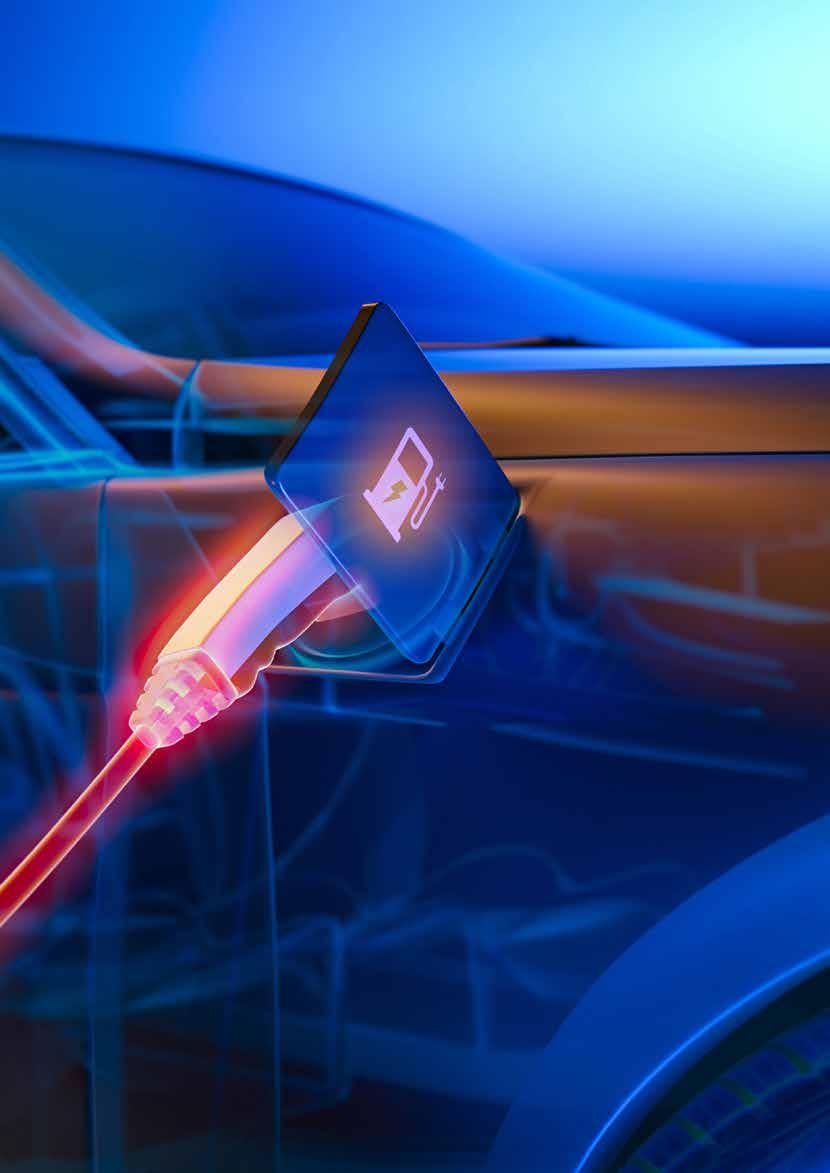
Behyad Jafari, CEO of the Electric Vehicle Council of Australia (EVC).

“Because of how manufacturing has shifted, the benefit of being in Australia has also shifted; it’s advanced manufacturing with a highly skilled workforce. And Australia’s a great location to service the region from because we’ve got good trading relationships. These advantages give Australia a leg up. We can get started, and if successful, ramp up production to service the region.”
Continued next page
Right: The Tritium team with the new RTM75 DC Fast Charger. From left: Dr David Finn, Founder and Chief Growth Officer; David Toomey, Chief Revenue Officer ; James Kennedy, Founder and Chief Growth Officer; Jane Hunter, Chief Executive Officer; and Michael Hipwood, Chief Financial Officer
Contined from previous page
However, there are obstacles. One of the biggest, according to Jafari, is a culture of pessimism: a mindset that, because we’re a small country with a small domestic market far removed from the big export markets, pursuing these opportunities is pointless. Often it’s government who are the most apathetic. “We get lots of investors from around the world who see benefits in putting operations here,” he says. “But other countries are competing harder than we are. We speak to international investors who say they stopped by Singapore or Malaysia or Thailand on their way to Australia, and in those countries they roll out the red carpet. Their presidents are waiting at the plane, saying ‘How do we get you guys to invest here?’ We don’t see that enthusiasm here. If companies don’t see that, that gives them less confidence. So it’s this crazy situation where we’ve got the rocks, we’ve actually got an edge over the competition; we’re just choosing not to do anything with it.” Jafari thinks government could do more to support the sector, starting with promoting Australia’s own EV market through measures such as fuel efficiency standards and tax exemptions. Jafari also favours subsidies to help in the building of charging infrastructure. Steps like these would in turn inspire confidence among investors. “Countries around the world are providing generous subsidies to start preparing their markets and accelerate that growth. They see that the more you start feeding this today, the more you get the businesses being set up in your country, as opposed to somewhere else. “If you look at technologies over the past century, as you hit that tipping point, a technology goes from being 5% to 90% market share very quickly. That’s why you’ve got countries confidently saying ‘We’re going to ban internal combustion engines’ and setting targets for 100% electrification. They’re doing the work now to prepare. If we don’t do that work, that big shift will come and we’ll start preparing in the midst of it.” Jafari believes the potential size of an EV industry in Australia is really down to us. We have the means to compete across the value chain globally; it is just a question of how much we prioritise it. “It’s not something that’s out of reach for any other reason than us choosing to not pursue it. Can Australia become a significant base of operations for the global e-mobility sector? Certainly. Are we currently taking the steps to realise that? No, we’re not. “The ingredients are there. We’re not imagining a scenario of ‘What if we had these businesses here?’ They’re already here. Support them, help them grow, and help more of them come up.” Tritium – Super-charging innovation When considering e-mobility, it’s easy to just picture the cars themselves, but there’s a whole lot more to it than that. Just as with traditional, internal-combustion vehicles, EVs cannot be viable without a plethora of supporting equipment and infrastructure, all of which create opportunities for innovation. And despite us lagging behind in the global EV revolution, many Australians might be surprised to learn we do already have at least one world leader in this area. Tritium produces some of the world’s most advanced charging equipment for EVs, controlling about 20% of the market in Europe, about 15% in the US, and more than 90% here in Australia. Moreover while the company has a truly global footprint with facilities in the US and the Netherlands, it still designs and manufactures its products from its headquarters in Brisbane.
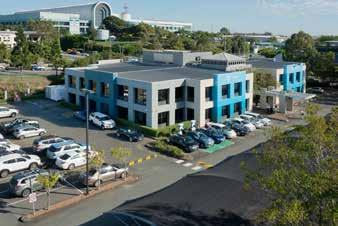
Tritium designs and manufactures almost all of its products from its headquarters in Brisbane.

The company was founded in 2001 by Dr David Finn, James Kennedy and Dr Paul Sernia. As engineering students at the University of Queensland, the trio’s SunShark solar racing car took third place at the 1999 World Solar Challenge, and they established Tritium initially to sell motor controllers based on the SunShark technology. Today it has exported more than 4,500 chargers to more than 38 countries. Finn and Kennedy are now Chief Growth Officer and Chief Technology Officer respectively, while Sernia remains involved as a Non-Executive Director. Former Boeing executive Jane Hunter came on board this March as CEO. On 17 November Tritium held an event in Brisbane, streamed online to a global audience, to mark the launch of its new MSC (Modular Scalable Charging) hardware platform. MSC is the first platform to enable truly scalable EV charging networks, overcoming a key bottleneck in the roll-out of charging infrastructure by allowing charging systems’ power levels to be increased as capabilities advance. Previously, operators of charging networks had to install chargers from a set of prefabricated charging options; often set at 50kW (fast or rapid chargers), 175kW or 350kW (high power or ultra-fast chargers). MSC allows quick installation of additional modules within compatible chargers so power can be increased in 25kW increments, from 25kW to 350kW and beyond. “This has been something the industry and our customers have asked for over the years, and we are the first company in the world to deliver it,” said Hunter. “With our MSC platform, 50kW DC chargers can quickly be upgraded to 75kW, 100kW and beyond, without a rip-and-replace required. This solution is future-proofing governments and network operators across the globe; something they have been crying out for.” The company also unveiled the first charger built on the MSC platform – the next-gen RTM75 DC Fast Charger. Capable of adding 75km of range to an EV in ten minutes of charging, the slim charger also allows simultaneous charging of two vehicles at once.
Tritium’s PK350 high power charger makes up the majority of IONITY in Europe, the world’s largest and fastest charging network.
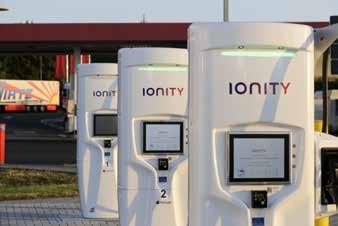
“The electrification of transportation is at a tipping point, so our customers want to know how they can easily extend their charging site capacity over the coming years,” said Finn. “Tritium’s MSC Hardware Platform allows our customers to scale their charging sites for half the price and configure their charging sites for a desired reliability.” The MSC platform and the RTM75 charger build on Tritium’s existing flagship products. Its RT50 fast charger is used in the NRMA NSW-wide fast charging network and the Queensland Electric Super Highway, as well as many locations overseas. Meanwhile the PK350 high power charger dominates IONITY in Europe, the world’s largest, fastest charging network, and is being rolled out as part of nationwide networks in Australia. Tritium has also launched a range of products in the software space this year, as well as a US-specific charger, the RT175-S. To maintain its position in an increasingly competitive global market, Tritium invests heavily in research & development (R&D). With more than 300 employees globally, its R&D and engineering teams are the same size as its executive, sales and marketing teams combined, and at times it has been adding an engineer to the payroll every week on average. To accommodate that growth, Tritium in April completed a major expansion of its Brisbane headquarters with the opening of the E-Mobility Innovation Centre, a state-of-the-art new R&D facility. The company is now building what Hunter says will be “the world’s most high-powered test & certification facility” – again in Brisbane. With the market for its products tipped for rapid growth worldwide, it’s an exciting move for a company that remains committed to manufacturing in Australia.
The Urban small car is one of three vehicles ACE EV will initially be releasing, along with the Cargo, a light van, and the Yewt, a utility vehicle. “It is actually a world first,” says Hunter. “There’s nobody else in the world who can test at 720kW power. So this is an absolutely key critical advantage for us in the market. And we’re just terribly excited to bring that to Brisbane, because it is going to attract other industry to the state.” ACE EV – A new Aussie car manufacturer? Even though the EV sector encompasses more than just the vehicle itself, for many in Australian manufacturing, what truly fires the imagination is the idea of actually making cars – or trucks or buses – here in this country. In this regard there is already a lot of activity. October saw news of the purchase of 51 hectares of land in Moss Vale, NSW, by clean-tech investment group TrueGreen and its bus subsidiary Nexport to establish a dedicated EV production facility. Meanwhile, Melbourne-based SEA Electric recently secured a $20m investment from the US, amid growing international interest in its power-system technology for commercial vehicles.
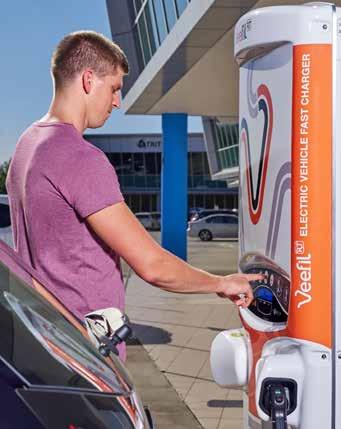
Continued net page

ACE EV has a contract partnership with Adelaide-based Aldom Motor Body Builders, which will produce the vehicles in South Australia.

Contiued from previous page
Perhaps one of the most interesting examples is ACE Electric Vehicles, a Queenland start-up with an ambitious plan to produce EVs in Australia and export them. But first and foremost, the team at ACE EV do not think of themselves as vehicle manufacturers. “Everyone thinks we’re a vehicle manufacturing business,” says Greg McGarvie, Managing Director of ACE EV. “We’re not really; we’re an energy management solutions manufacturing business. It just happens to be a smart energy pack on wheels with seats that moves people around inexpensively – and cleanly. You’ve got this nice quiet vehicle that is a pleasure to drive and less than a third of the running cost of an equivalent fossil fuel smoker.” ACE EV is initially bringing out three vehicle models. The Cargo light van and the Yewt utility vehicle, are already online for reservation. The third, the Urban small car, will be available in early 2022; further down the line there is also a sports car in development. However, the strategy with the Cargo and the Yewt is to find niches where a product like this can swiftly find a footing. “We’re looking at the light commercial, last-mile, urban deliverystyle vehicle,” says McGarvie. “Our focus is at the market point that we think will work, and that focus is really on fleet and groups like that. If you’re going for the general population there’s all sorts of different tastes and expectations. Our vehicle is a working vehicle. It’s a low-risk strategy, but it might actually accelerate.” The smart energy management adds a further dimension to what ACE EV is doing, with ongoing trials in bidirectional charging and vehicle-to-grid technology – which would see the vehicle’s battery doubling as an energy source and grid-storage device when the vehicle is not in use. It’s just one way that ACE EV is taking a different, innovative approach. The company is working with AI solutions company SenSen to develop autonomous driving capabilities, and that partnership will also see the development of plug-in packs that enable owners to personalise their vehicle in the same way as we do now with mobile phones. The innovation is most prominent in the vehicles themselves. Built on a carbon-fibre skeleton, they offer greatly reduced weight while being easily customisable to meet customers’ requirements. The panelling is made from ABS plastic, with parts glued together like the adhesive bondings on the Boeing 787 Dreamliner, and the vehicles can be shipped as smart-packed kits for assembly closer to the target market. “What we have here is a technology that’s world-leading,” says McGarvie. “It’s a 100% composite vehicle, and the whole idea behind it is its long life. The skeleton should last as long as you do. But people get sick of the look of a vehicle and they need change, so you can change the skins on our vehicles after five years and have a different looking vehicle.” The distinctive, unconventional nature of much of what ACE EV is doing is reflected in the company’s origins. Formerly a marine biologist, McGarvie emphasises that concern over the environmental impact of fossil fuels was a key motive when setting up the company. He and co-founder Will Qiang were originally developing a solar farm when they were introduced to engineers Dr Charles Kung and Gerhard Kurr, based in Taiwan and Germany respectively. Kung and Kurr had developed the concept for ACE EV’s vehicles, and with them as technology partners, the company was established in 2016. ACE EV has a contract partnership with Adelaide-based Aldom Motor Body Builders, who will produce the vehicles in South Australia. Initially a trial batch of 20 vehicles are being brought in in smartpack form and assembled at Aldom’s plant in Wingfield. While that trial is underway, the team will be setting up the full production line, using the initial vehicle stock to attract further investment and recruit supply chain partners. The aim is to use local suppliers as much as possible. “Effectively we want to aim for an assembly process with at least 25% Australian content,” says McGarvie. “Then, when we’ve got the full factory in place, more than 50%. And it can escalate from that – already there are some battery manufacturing facilities starting up.”
Going forward, the ACE EV concept is built around a lean, efficient manufacturing process that is highly agile and flexible. “The beauty of our vehicle is it takes one-third of the energy to build, so that’s a saving straight off. It’s about 50% lighter than its equivalent – that’s important with EVs. And we can do a model change in less than 20 months, from concept to prototype. The auto industry would still be thinking about it in that time.” ACE EV is setting ambitious targets for exports, with plans for 70% of its product to go overseas. While the Australian operation will serve as the global manufacturing centre, final assembly will be undertaken in the destination markets. “Effectively it goes offshore in six boxes, and we bring people from the destination country and train them on our production line,” says McGarvie. “They set up a climate-controlled workshop in the partner country, we ship the vehicle in, and they assemble it. It’s a win-win: for them it’s creating jobs, creating new technology opportunities; for us there will be a pipeline. It’s a big win for Australia.” There have been difficulties: securing investment hasn’t been easy, and government support has been limited. But going forward McGarvie is optimistic, and he sees enormous potential for Australian manufacturers as the business begins to scale up. “We’re being approached by many now: for the wiring harnesses for the vehicles, even power trains down the track. Batteries are another one. The battery is roughly 30%-40% of the cost of the vehicle at the moment, and Australia’s got some of the best resources with lithium. The more we can do in Australia and value add here the better. And with robotics, people can be put to much better use in other areas of the process.” As well as the benefits for those manufacturers, there are gains to be made for the broader economy and indeed Australia as a nation. “It’s just a job multiplier,” says McGarvie. “Our original financial modelling showed we would be producing well over 24,000 vehicles by 2025, and it’ll create over 500 jobs. Now, with levels of offshore demand, it has become prudent to budget for double the production and jobs. And this will create close to one billion dollars in revenue to the state. Australia is in a really good position if it’s quick and smart to take a global technology lead. It just needs government to really get on board and support what we’re doing. “Our goal is to get as many EVs in the place as possible, as soon as possible, and running on renewable energy. Everybody could see the difference during the peak of the pandemic; when cities were no longer running vehicles, suddenly we had sunshine and clean air. That’s possible with EVs.”
www.electricvehiclecouncil.com.au www.tritiumcharging.com www.ace-ev.com.au
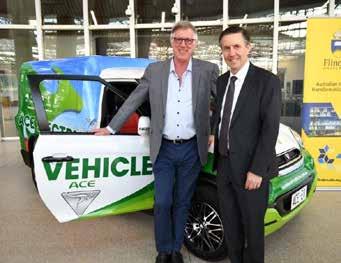
SEE WHY CHANGE IS GOOD
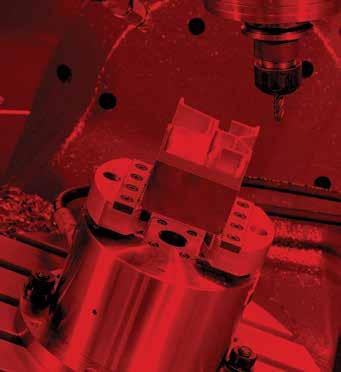
The Redesigned UMC-750SS
Increased performance and real operator convenience

The Haas UMC-750SS features simultaneous 5-axis machining, giving you a cost-effective solution for reducing setups and increasing accuracy for multisided and complex parts. And operators will love these user-friendly improvements: • Cycloidal rotary drives • Larger side-window • Lighter operator door • Stiffer base casting • Front-mounted control pendant • Standard rollaway • Easy-access operator coolant tank features
Come see the UMC-750SS for yourself at our new showroom. Sign up for your personalized demonstration at haas-australia.com, or call 1300 20 12 30 today.
To ensure your safety, we are following all CDC COVID-19 guidelines at our showroom.










